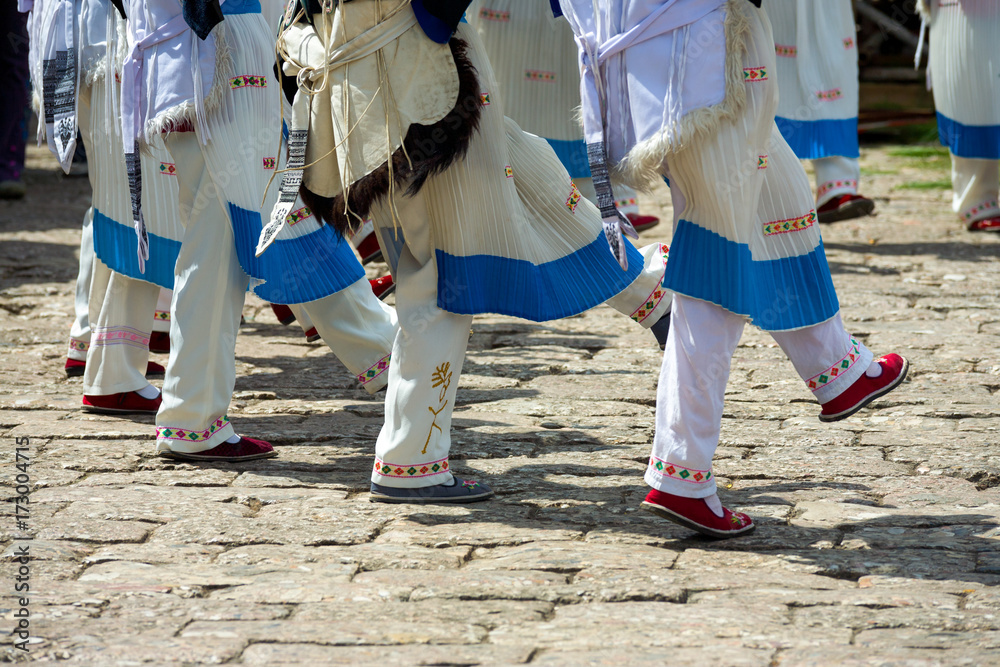Tea’s Birthplace Supports Wide and Exciting Ethnic Diversity
With about 1.4 billion people, China is the most populous country on Earth, accounting for more than 18% of the world’s population. Among the residents, the ethnic group Han dominates, with 92 percent of the country’s population.
But concentrations of Han Chinese are not equally high among the country’s many provinces. In Yunnan, China’s most ethnically diverse province, Han account for just 67% of the population. The remaining 33% of Yunnan is divided among 25 official ethnic minorities, representing nearly half of China’s list of 55 official ethnic minorities. Diversity is so pronounced in Yunnan that people speak more than 60 different languages and dialects.

We celebrate Yunnan’s astonishing cultural and ethnic diversity. People in the California-sized province devote themselves to different religions, enjoy markedly varied cuisines, and participate in myriad distinct cultural practices and traditions. While much of China is industrial, three-quarters of Yunnan remains rural.
The Mosuo people in northern Yunnan, for example, have been living in relative isolation around an alpine lake called Lugu Lake for generations. One of the many interesting aspects of Mosuo life revolves around something called “walking marriage,” in which spouses don’t live together. Mosuo culture is one of China’s last matrilineal societies, in which women hold most of the power, including land ownership, while men largely tend to livestock.

Yunnan includes the county Shangri-La, where most of Yunnan’s people of Tibetan ethnicity are found. Shangri-La is colorful with temples and traditional Tibetan clothes, and full of mountains.
Yunnan’s isolation invites artists, free thinkers
Yunnan’s density of mountains, tumultuous rivers and thick forests help preserve its relative separation from other parts of China. It can simply be difficult to get to Yunnan. Stemming from the province’s remove from Chinese officialdom, people in Yunnan are known for speaking their minds.
Yunnan’s welcoming of free thinking, in fact, has turned the province into a sanctuary for artists, musicians and others desiring simple lives liberated from constant oversight. Many backpackers have toured the dramatically beautiful province and stayed put. Old Town Dali’s Renmin Street famously attracted intellectual wanderers, who would spend time selling handmade crafts on the street as they traveled through Southeast Asia and Tibet.

Yunnan’s myriad ethnic groups include:
The Bai
These people, native to the area surrounding the beautiful city of Dali, are known for their white clothing and decorations, and their overall reverence for the color white. They speak the Bai language, and are largely involved with agricultural industries, such as growing rice, wheat and millet, and fishing.

The Naxi
The Naxi people practice the Dongba religion, which involves a variety of priest-led rituals aimed at pleasing a wide range of gods and spirits that play important roles in the natural world. Like the aforementioned Mosuo people, the Naxi also take part in a matrilineal society, in which marriage is nonexistent and women are in charge of families, property and more.
The Lisu
Nearly 60 clans constitute the Lisu tribe, an ethnic group in western Yunnan with more than 700,000 members. Lisu people live in mountainous areas, and mostly pursue agriculture. Many converted to Christianity in the early 20th century, and today most Lisu are Christians.
One last note about Yunnan’s ethnic diversity, before we explore tea. The many ethnic groups that call Yunnan home tend to have strong affinities for music. Some groups have their own, unique instruments, such as the Yi xianzi, which now is important to all of Yunnan culture. Singing, dancing and other folk customs that incorporate music are an important part of Yunnan culture.
While Yunnan offers striking diversity, at least one thing ties together all of the ethnicities and regions: a love of tea. As Yunnan is the birthplace of tea, it’s no surprise that people across the province consider tea as a central part of culture.
Taste of Yunnan Teas: Gu Yun

As discussed in the first installment of Taste of Yunnan, the province is famous for pu-erh tea, China’s earthy and complex fermented tea, which in some cases is aged for a decade or more before becoming available for sale. Tea connoisseurs around the world buy pu-erh, which is often sold in the form of cakes or blocks, and age it further, to help coax increasingly more complexity out of the tea.
Gu Yun is our signature ripe pu-erh cake. Hailing from Yunnan’s Menghai County, Gu Yun means “ancient atmosphere.” This tea is grown in a region dense with ancient tea mountains. As a ripe pu-erh, the fermentation process is sped along by human intervention; with raw pu-erhs, on the other hand, fermentation takes many years and happens naturally. Upon brewing, this tea offers earthy-yet-clean flavors, and a sweet aftertaste.
Taste of Yunnan: Gao Shan Yin Xiang

Where Go Yun was a ripe pu-erh, our Gao Shan Yin Xiang is a raw pu-erh, meaning tea artisans aged this tea for many years before offering it for sale. Meaning “high mountain impression,” Gao Shan Yin Xiang is created from a single farmer’s tea garden in Stone Village on Nan Nuo Shan, one of Yunnan’s six famous tea mountains.
Farmers harvested this tea from ancient arbor trees that are more than 100 years old, and then stone-pressed it in the traditional manner. The laoshu (old tree) origins of this tea broadcast themselves through the tea-sipping experience. Gao Shan Yin Xiang starts with an intensely floral nose, followed by a butter palate and a firm but pleasing kuwei, which means “good bitterness.”
Taste of Yunnan: Sweet Rice Pu-erh

Most pu-erh is formed into cakes and fermented and aged. But this interesting style of raw pu-erh is loose-leaf, and made by Hmong people in Pingbian, a small Yunnan town.
Our Sweet Rice Pu-erh has a unique flavor of sweet rice that is simultaneously earthy and cooling. Its hearty taste and aroma will leave you refreshed and energized.

